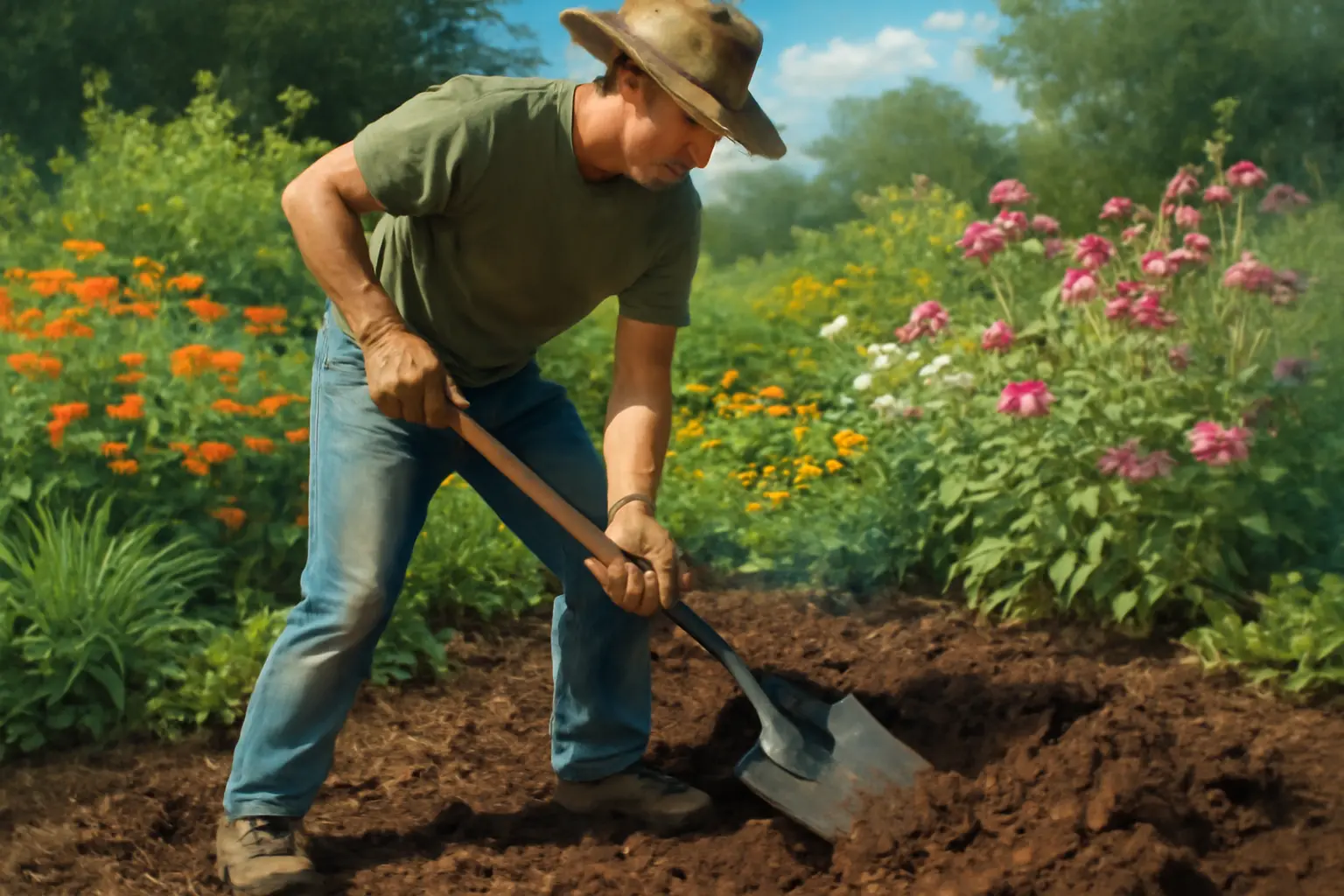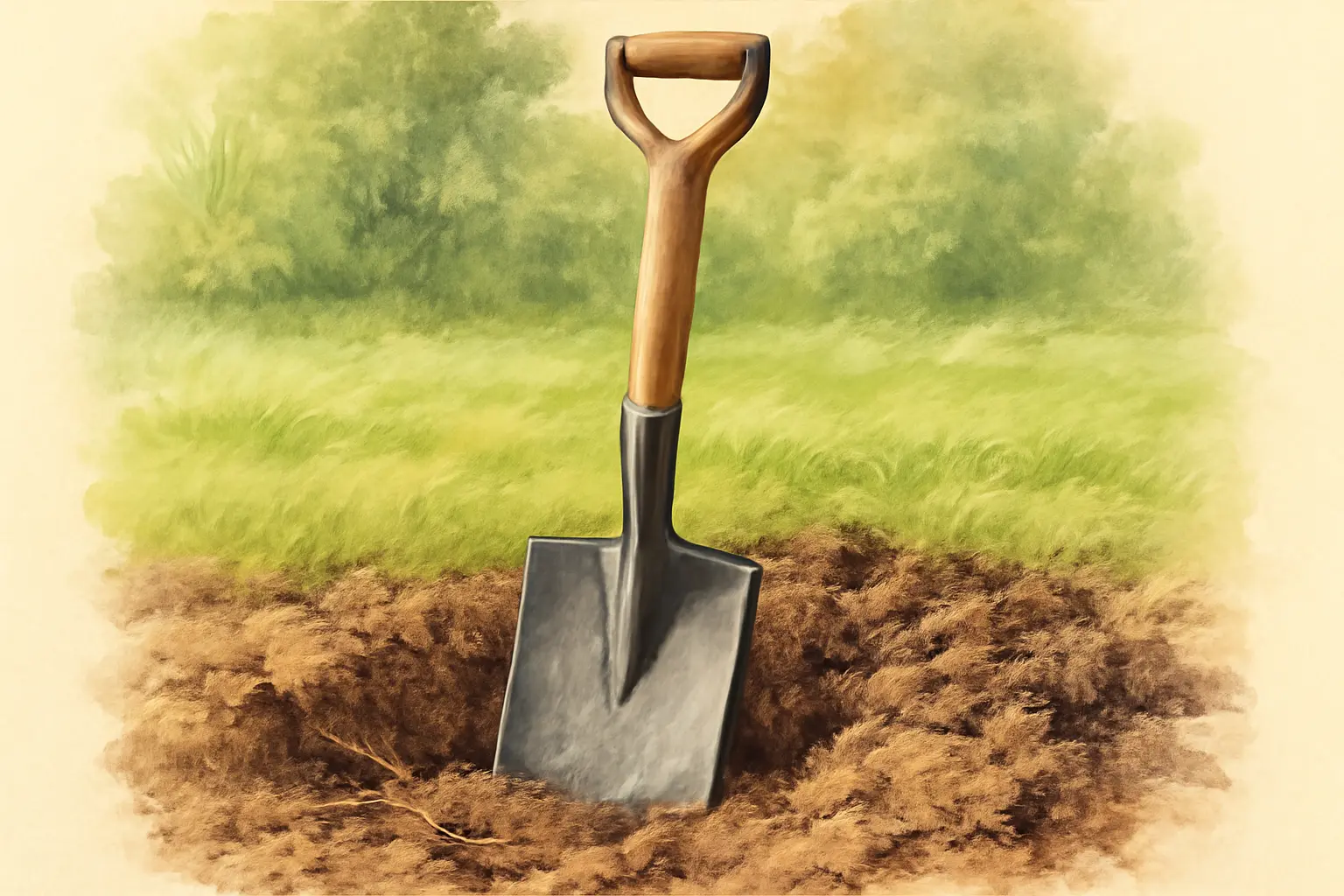
1. Understanding the Digging Spade
Key distinctions illustrate the technique differences: while shovels stir and move soil efficiently, digging spades enable tighter, more accurate vertical cuts. For example, dividing perennials or creating crisp garden borders calls for the digging spade technique—pressing and levering the blade with minimal soil disturbance.
Understanding these design and functional nuances helps gardeners or landscapers choose the right tool, ensuring effective soil management. Employing the digging spade correctly reduces effort and improves results, especially in compacted or clay-heavy soils. Thus, this tool’s specialized use complements rather than replaces shovels in a gardener’s arsenal.
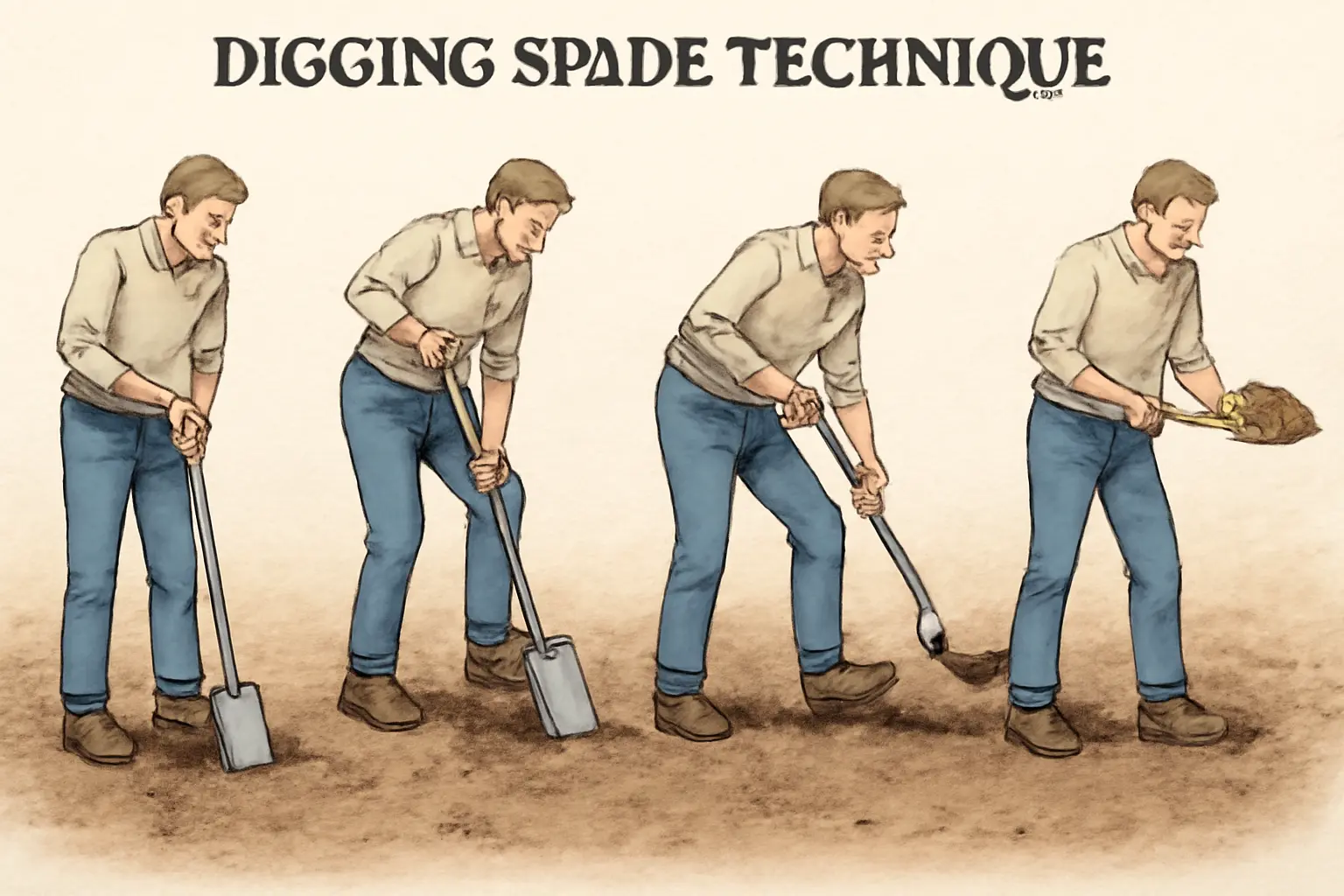
2. Step-by-Step Digging Spade Technique
Proper hand placement is crucial; grip the handle firmly but not too tight, placing one hand near the top and the other closer to the blade for optimal leverage and control. Engage your leg muscles rather than your back to lift and turn soil, reducing risk of injury while improving stamina during extended digging tasks.
Different tasks call for adjusted techniques in 2025 gardening. For creating straight edges, angle the spade carefully and use controlled slicing motions rather than brute force. When trenching, use consistent depth and smooth sidewalls by layering soil removal in sections. Handling compacted soil demands repeated, firm foot pressure and sometimes slight twisting of the spade to break through hard layers effectively.
By adhering to these detailed steps and adapting your approach to the soil condition and task type, you sharpen your digging spade technique for efficient, injury-free gardening work year-round.
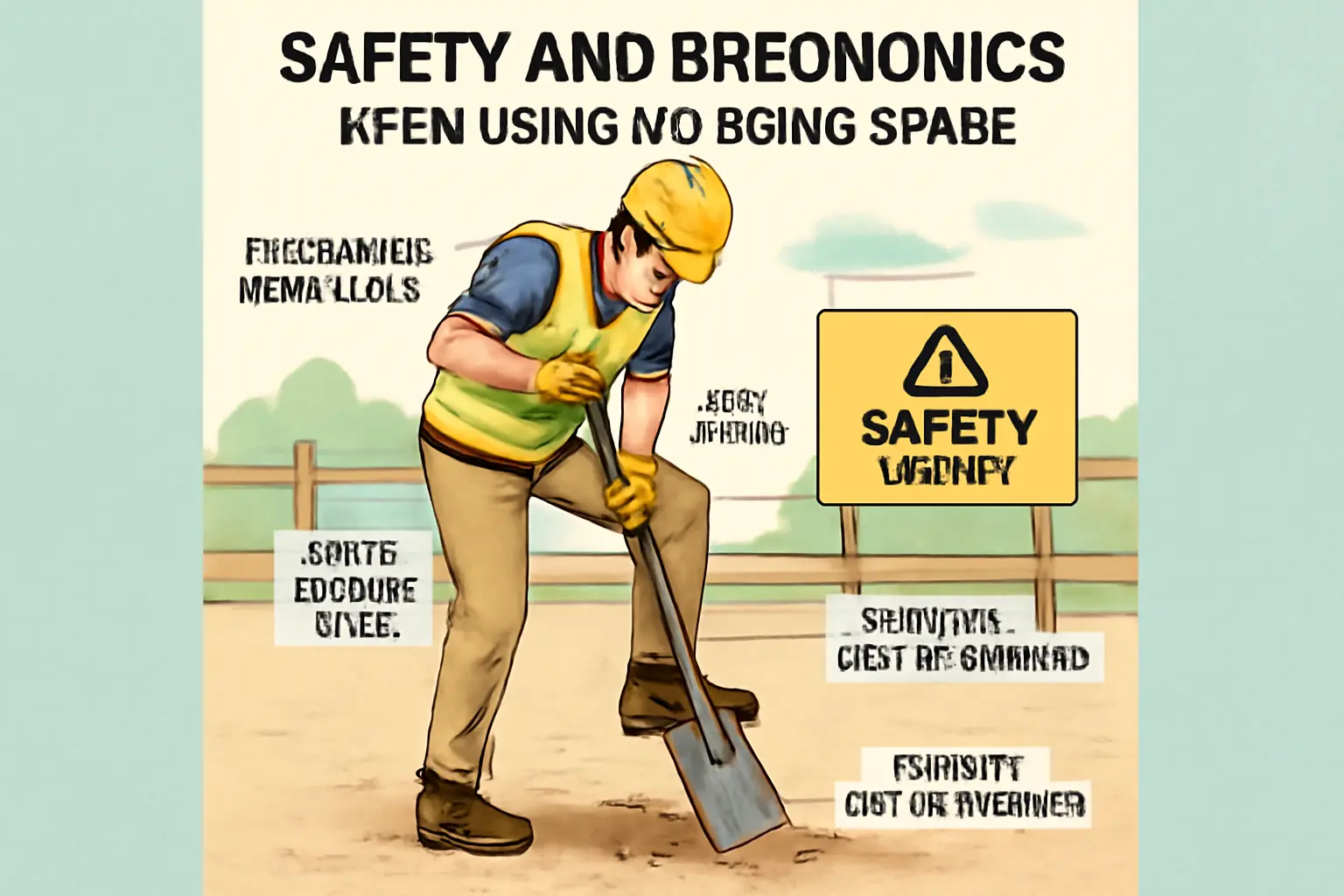
3. Safety and Ergonomics Best Practices
Wearing appropriate safety gear is essential. Use heavy-duty gloves to protect your hands from blisters and splinters, and sturdy boots to shield feet from accidental impacts. Eye protection can prevent injuries from debris. Staying hydrated cannot be overlooked—regular water intake prevents fatigue and keeps muscles functioning optimally.
To avoid common injuries like muscle strains, follow these tips:
– Pace your work with breaks to prevent repetitive strain.
– Use a spade with a handle length suited to your height to reduce overreaching.
– Position your feet shoulder-width apart to stabilize your stance.
Adhering to these practices in 2025 ensures safer, more effective digging sessions that protect your body while maximizing productivity.
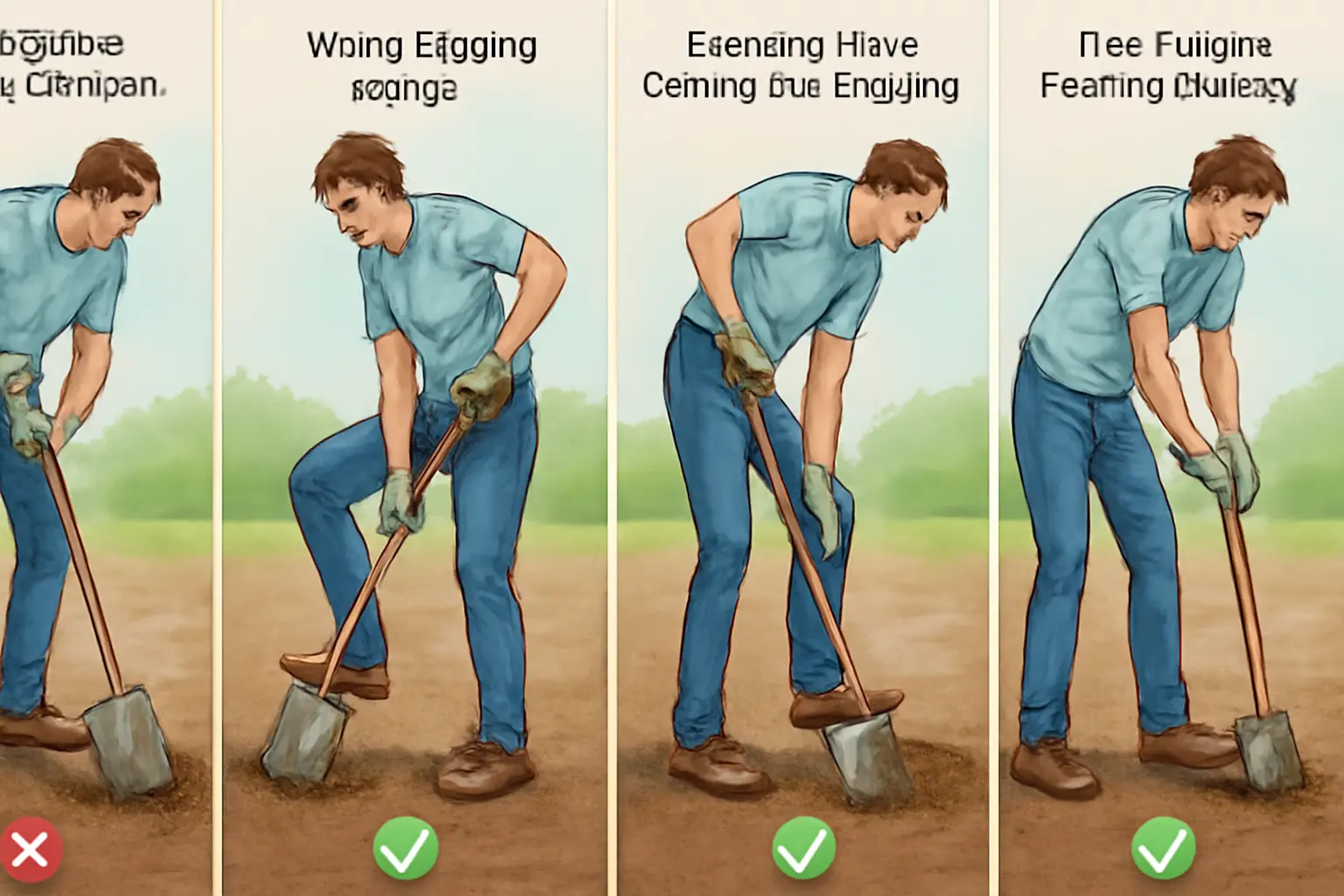
4. Common Mistakes and How to Avoid Them
These mistakes not only waste effort but can cause injuries and tool damage. For example, lifting soil using the legs rather than the back preserves energy and prevents discomfort. Recognizing the spade’s flat blade designed for cutting through soil contrast with the shovel’s rounded edge intended for scooping helps refine your approach.
To improve your spade technique:
– Practice bending your knees and keep your back straight when lifting soil.
– Use the spade’s sharp edge to slice into compacted earth instead of pushing it directly like a shovel.
– Regularly maintain the tool blade for easier cuts.
Applying these strategies corrects inefficient habits and enhances digging precision, leading to safer, faster garden work.
5. Maintaining Your Digging Spade
6. Visual Aids and Practical Examples
For example, a series of images showing the spade blade entering the soil at a 45-degree angle while the user maintains a straight back emphasizes proper leverage and power application. Additionally, video demonstrations clarify how to adjust posture dynamically, especially on uneven ground, making each movement safer and more effective. Visual tools also serve as quick references during practice, reinforcing muscle memory for smooth, energy-efficient digging. Incorporating these aids ensures that both novices and experienced gardeners can achieve precision and comfort while using a spade.
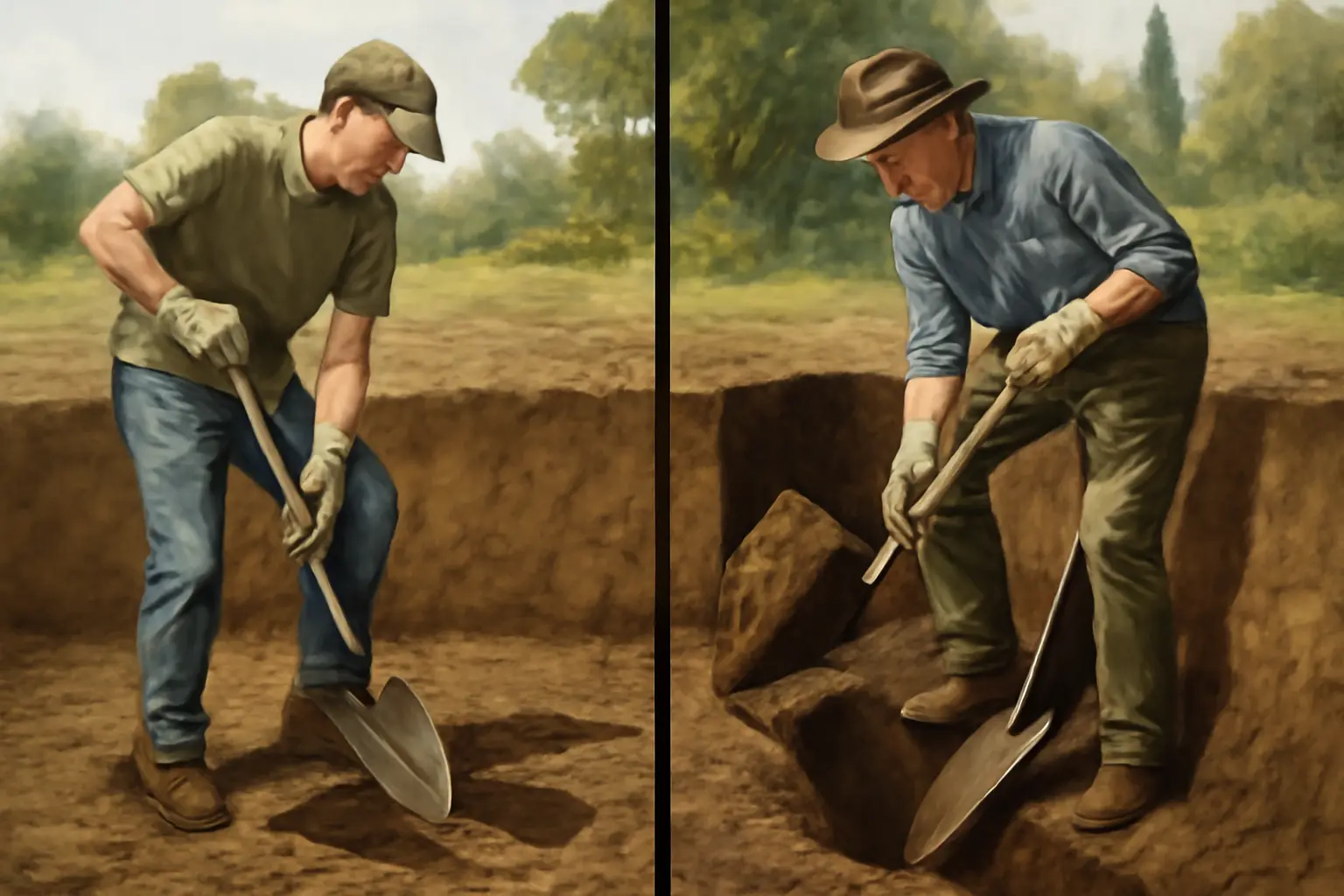
7. Transitioning From Basic to Advanced Techniques
Experienced gardeners can also enhance efficiency and minimize fatigue by adjusting body posture and levering techniques. Using your legs rather than your back when applying force prevents strain and increases stamina during prolonged work. For larger projects, alternating between digging and resting muscles or switching to complementary tools such as a fork can speed progress and safeguard health.
Additional tips include:
– Moistening soil slightly to soften hard grounds before digging
– Planning your dig in sections to maintain consistent energy levels
– Regularly sharpening the spade blade to maintain clean cuts
Mastering these advanced nuances in digging spade technique allows for precise, effort-conscious gardening tailored to specific conditions, ultimately improving productivity in 2025.
8. Supplementary Content: Frequently Asked Questions
Digging depth also critically affects plant growth. Deeper digging loosens compacted soil, improving root penetration and water drainage, but excessive depth can disturb beneficial soil layers and microorganisms. A balanced approach, matched to plant type, ensures robust root systems.
Safety and ergonomics cannot be overlooked. Common issues include back strain and wrist fatigue. To prevent these:
– Adjust handle length to your height to maintain proper posture
– Use your legs more than your back when digging
– Wear gloves for grip and protection
– Take breaks to avoid strain
These adjustments, along with correct tool choice and technique, contribute to efficient, safe gardening practices in 2025 and beyond.

